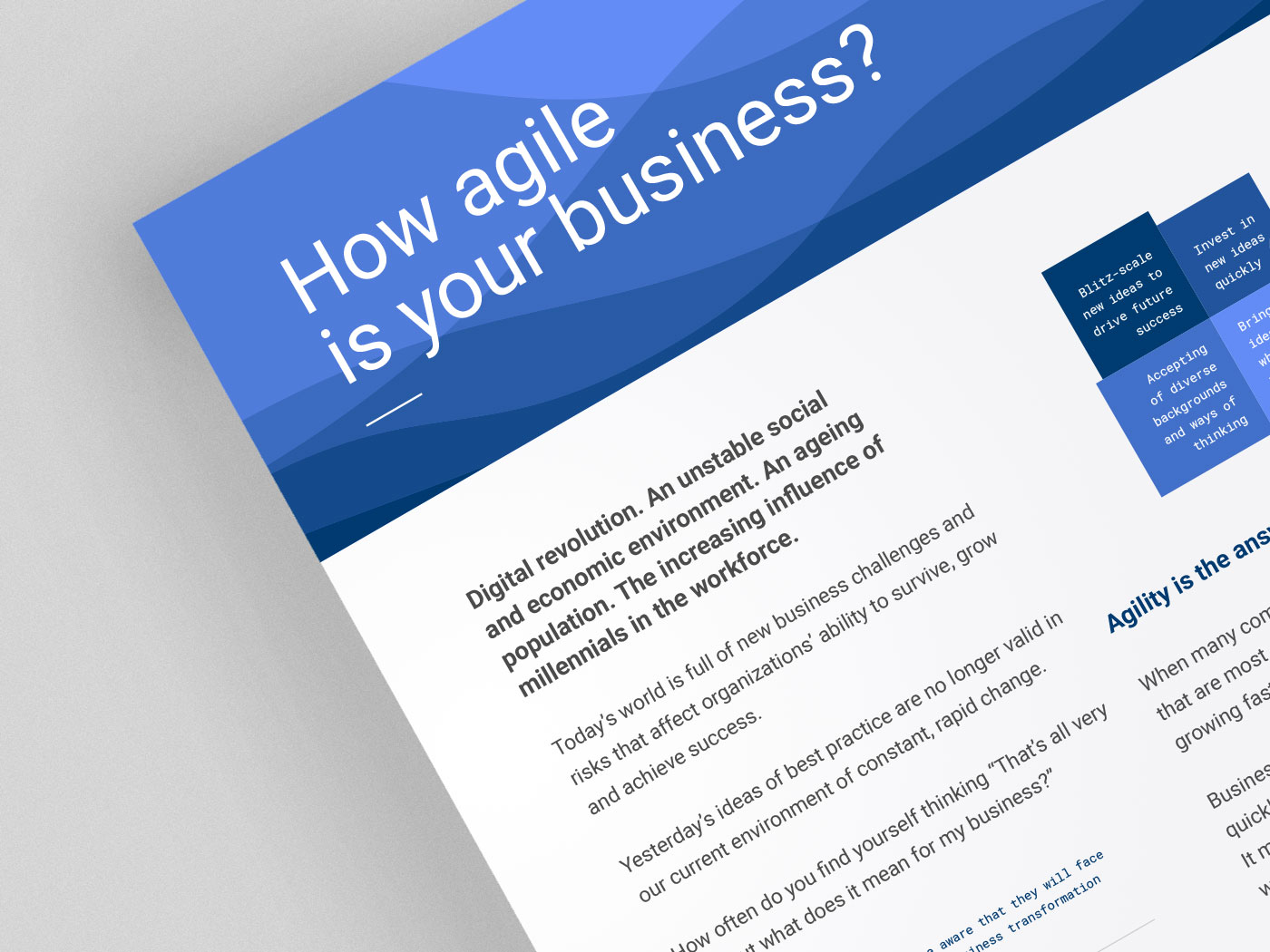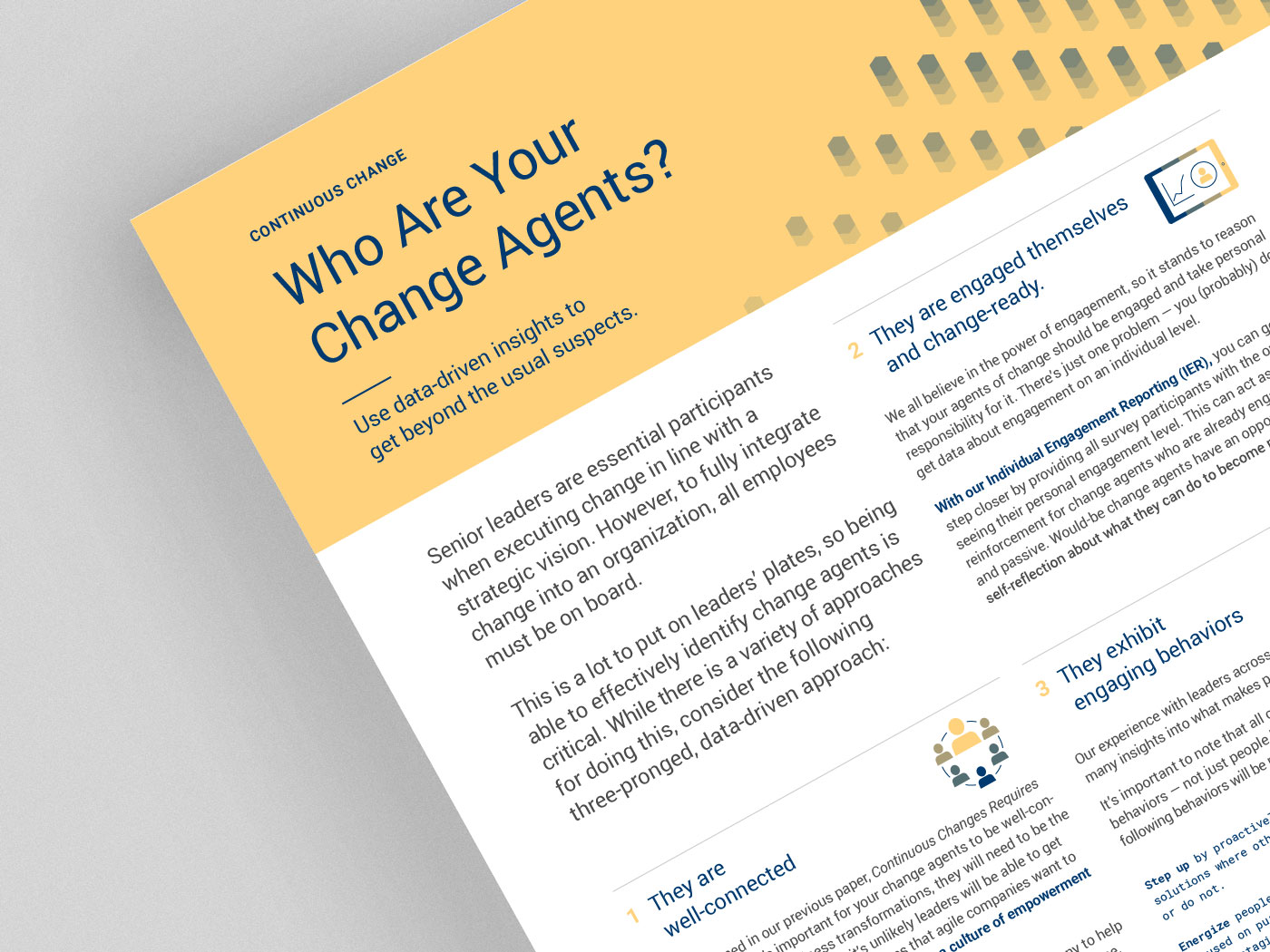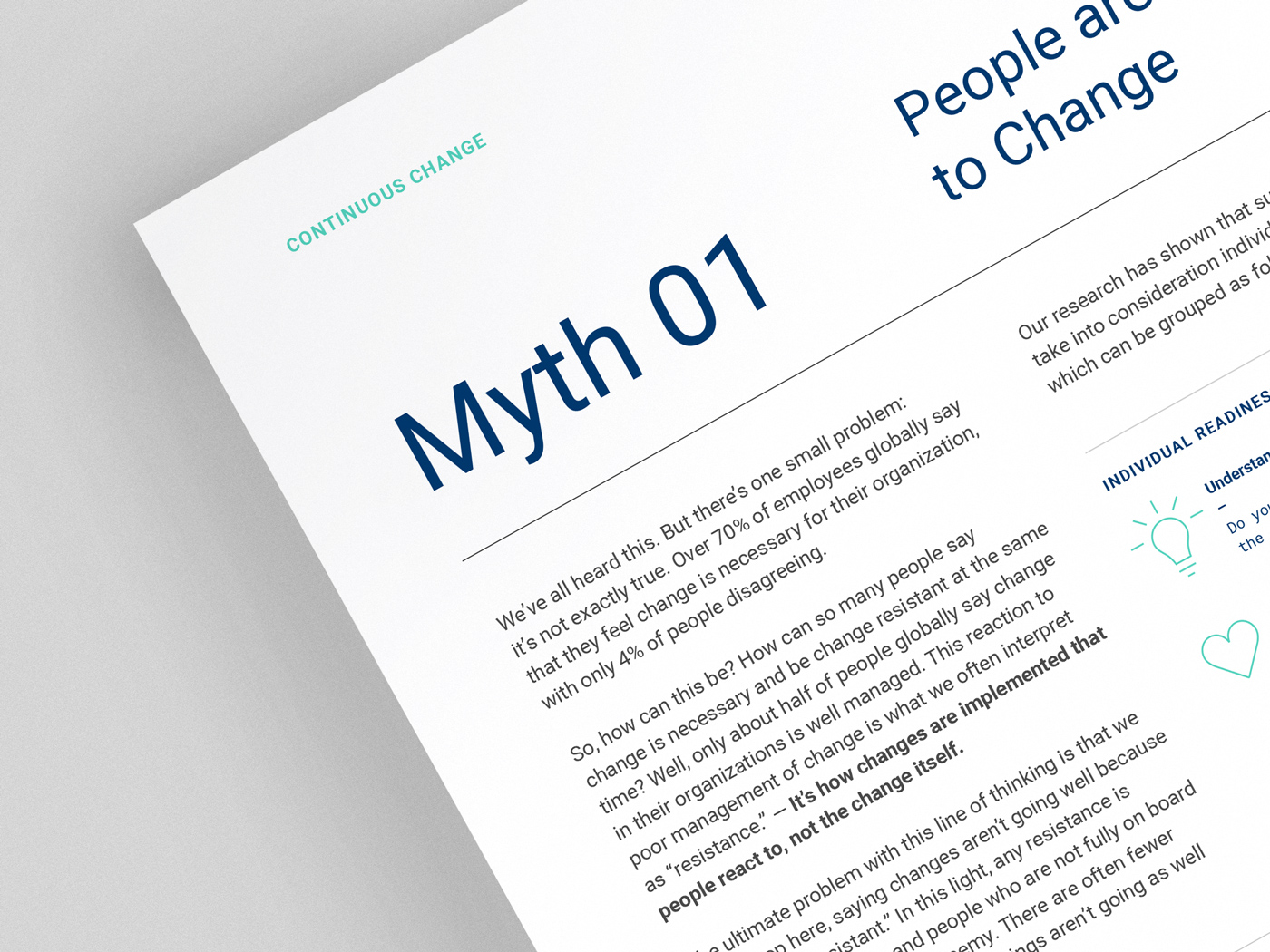
Regardless of whether change is a merger or acquisition, a new technology implementation, an HR transformation, or ongoing, continuous shifts in the competitive landscape, organizations that want to succeed need to be change ready. And regardless of the type of change you are facing, it’s the people throughout your organization who will drive its success.
It’s easier to focus our planning efforts on the object of change — the new technology, the reorganization, the new process — because it’s tangible. The human element of the equation — helping people feel emotionally safe, connected, understood, empowered — is much trickier. We need to re-examine some of the underlying assumptions that drive how we approach change. Here are some common myths that get in the way of making change stick.
We’ve all heard this. But there’s one small problem: it’s not exactly true. Over 70% of employees globally say that they feel change is necessary for their organization, with only 4% of people disagreeing.
So, how can this be? How can so many people say change is necessary and be change resistant at the same time? Well, only about half of people globally say change in their organizations is well managed. This reaction to poor management of change is what we often interpret as “resistance.” — It’s how changes are implemented that people react to, not the change itself.
The ultimate problem with this line of thinking is that we often stop here, saying changes aren’t going well because people are “resistant.” In this light, any resistance is seen as a bad thing and people who are not fully on board with the change are the enemy. There are often fewer follow-up questions into why things aren’t going as well as they could be.
Our research has shown that successful change processes take into consideration individuals’ reactions to change, which can be grouped as follows:

Do you understand the changes?

Do you have the ability to support the changes?

Are you emotionally ready for the changes?

Do you intend to embrace the changes in the future?
These aren’t in a random order. They are listed in increasing order of difficulty based on what we have seen in our work with organizations across the world. It’s easier to get people to understand change, but much more difficult to tackle the cultural and organizational barriers that stop them from making behavior changes or getting fully on board with the organizational change.
CONSIDER THIS:
Perceived resistance to change is not an excuse for poor outcomes — take proactive steps to get people ready. Kincentric’s Change Readiness Diagnostic tool can assess where (and with whom) you are most ready for change.
51% Think it's well managed
71% See the need for change
In a change process, effective communication is critical.
Most communication around change is very rational. It explains what the change is and how it will help the company succeed. However, it often doesn’t address the immediate, emotional reactions that inhibit change effectiveness. To have the necessary impact, communication needs to be inspiring and authentic.
Communicating a change is definitely important, but from talking with our clients and analyzing our global employee research database, we’ve found that it’s actually not the biggest differentiator in making people change ready. This makes sense — about two-thirds of employees feel that they have good formal channels of communication, so it’s rarely a matter of not hearing about the change. The success or failure of change processes is instead deeply embedded in the human side of change.
CONNECTIONS – People need to feel involved and see effective collaboration when working through change.
CAPABILITIES – People need to believe that changes will positively impact their ability to get their work done and perform at a high level.
CONSEQUENCES – People need to have pay and recognition aligned to the desired change behaviors to stick with them in the long term.
For example, your company may be implementing a new CRM platform to drive greater accountability for sales pipeline management and cross-selling. The required behavior change is more than communicating the rollout and training sales employees on how to use the new system. You will also need to rethink how you set goals, enable people from different teams to work together on key accounts, and pay commissions.
CONSIDER THIS
Stakeholder analysis is more than just mapping out who is impacted on a grid. Only 48% of front line employees feel involved in the change process. Get people actively involved. Tap into emotions. Mix qualitative data from focus groups and change management workshops with quantitative data to help identify stakeholder hot spots (reward, recognition and personal growth opportunities).
51% of employees feel involved in the change process
Let’s call this one “half true.” A vision from your senior leaders is of course critical, especially for transformational changes like mergers and acquisitions or a business transformation. These need leader buy-in and alignment on the strategic vision. It’s also critical that leaders visibly head up the change along with support from key change agents on the ground.
But, a lot of organizational change does not fall into this transformational bucket. In today’s world, where many organizations are striving to adopt more agile business models, senior leaders must enable incremental change and continuous improvement. They do this by fostering a culture of empowerment in the people who are closest to the customer or the intended beneficiaries of the change.
Relying on traditional hierarchies may not be the optimal approach. Every workplace has powerful social networks that can be tapped into to accelerate change. Organizational Network Analyses (ONA) can help identify networks of influence that operate outside traditional structures.
Leveraging the power of brokers, connectors, energizers and disrupters will be increasingly necessary as organizational change becomes more common.1 These individuals can help improve coordination across groups. Although 3 out of 4 employees think there is good collaboration within their workgroup, only 54% feel there is effective collaboration between groups. Whether through the power of your organizational network or through developing more agile teams, coordination and collaboration across groups will be important.
Some change may be leader-led, while continuous change may need to empower employees across the organization to be successful. Be conscious of the type of change you are driving, and therefore the change strategies/ agents you need to deploy. Regardless of the type of change, trying to manage it without change agents on the ground is like fighting with one hand tied behind your back.
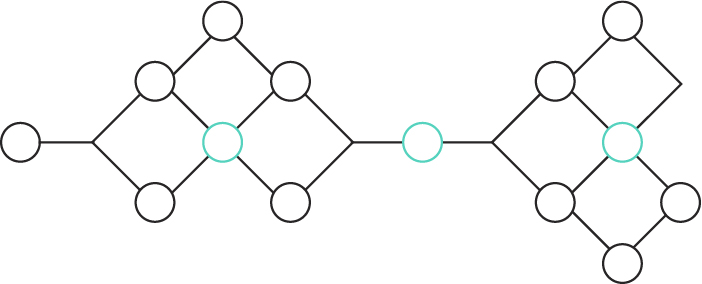
CONSIDER THIS:
What happens if central brokers or connectors are disengaged? We know that engagement is contagious — a targeted pulse survey for these high-impact employees may be more effective than asking the entire organization to take yet another pulse.
54% of people feel there is effective collaboration between groups
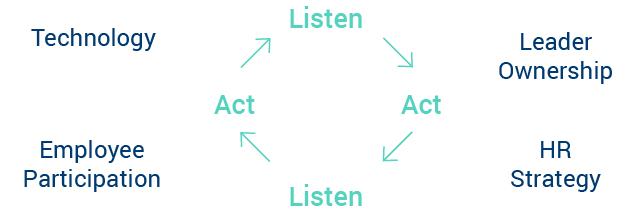
Many models present change as a step-by-step process to be managed. This typically starts by creating the "burning platform for change" and ends with a blurry phase called “sustainment.”
Some changes have a clear beginning and end. However, most changes, especially large-scale transformational changes, are messy processes that consist of a series of iterative and dynamic events, not all of which can be planned for in advance.
Organizations need to be sufficiently agile to adapt to continuous changes and ensure there is a compelling “why” behind each change phase. You may not get everyone on board, but 67% of people in Top Quartile organizations believe their workforce adapts well to change — 10 points higher than how the “average” employee feels. This cultural attribute of being adaptive to change can help ensure that subsequent, incremental changes have a purpose and are seen by employees as part of the natural evolution of the business.
Creating a workforce that adapts well to change requires more than formulaic change management. Change can be managed project-by-project, but this approach creates significant risks as organizations strive to become more agile. We can involve stakeholders, align rewards, and make processes more efficient, but how do we ensure we’re paying attention to the things that matter?
This question gets at the core of a continuous dialogue process. A single annual survey measurement has traditionally been used to provide a catch-all for employee feedback. However, as organizations evolve, creating iterative feedback loops will be increasingly necessary for change to be successful.
Continuous dialogue does not simply mean more measurement. It means asking better questions at the right time:
CONSIDER THIS:
In 2017, our research found that only 11% of companies were measuring engagement more than once a year. The next year, that number doubled to 21%. And by 2020 41% of companies plan to do so. This kind of rapid change toward continuous dialogue will require leaders and employees alike to break from the processes of the past.
To effectively guide your people through change, it’s time to rethink how you approach and measure change.
Instead of the four myths, we believe the following are more realistic reflections of organizational change today:
Contact us to understand how you can use powerful technology and human solutions to get your people ready for change, and prepare your organization for future success.
We bring a human touch to help you design the strategy; we bring decades of experience into our enabling technology; and, we bring the world’s best practice analytics and consulting capabilities to deliver insight that helps you solve your business’ most pressing issues.
Our combination of Impactful People Solutions, Intuitive Tech Experience and Data Driven Insight provides organizations with an exceptional competitive advantage.
1For a good, practical guide on the power of social networks, reference the book Adaptive Space: How GM and Other Companies are Positively Disrupting Themselves and Transforming into Agile Organizations, Michael Arena, 2018
We would like to thank a number of contributors to this project: Teryluz Andreu and Jenny Merry for their insights.
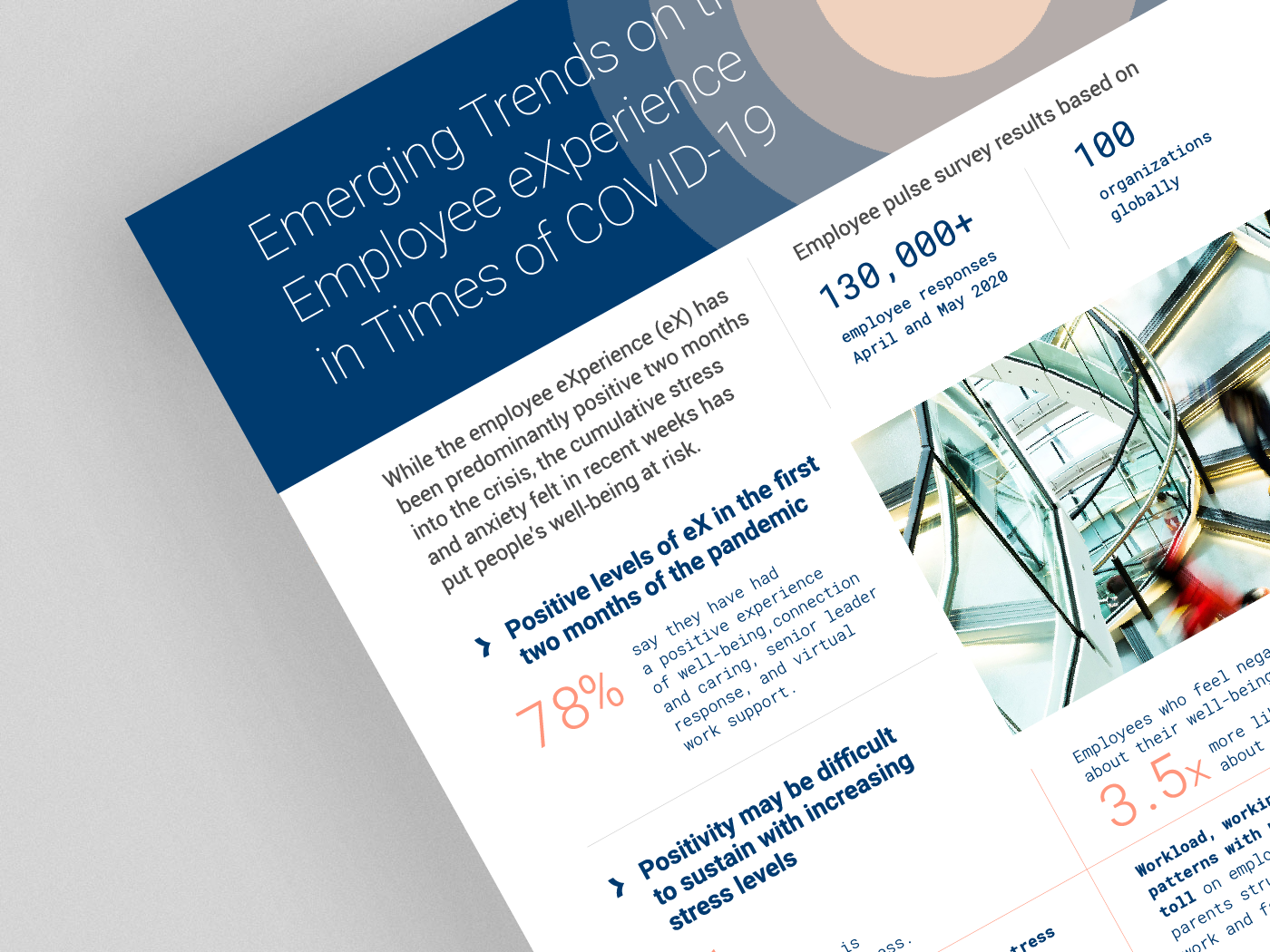
Our April/May employee pulse survey based on over 130,000 employee responses globally reveals that work-related stress is their #1 greatest concern. Discover our infographic with the latest employee eXperience trends.
